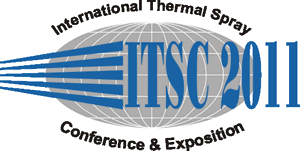
|
2725 |
|
Tuesday, September 27, 2011, Saal B2.1 11:50 AM HVOF & Flame Spraying 1 |
|
High velocity suspension flame spraying of nano oxide containing suspensions |
|
Andreas Killinger* / University of Stuttgart, Germany Philipp Müller/ University of Stuttgart, Germany Rainer Gadow/ University of Stuttgart, Germany |
|
Thermal Spraying of submicron and nanosized powder materials requires either the application of agglomeration techniques in order to achieve a powder particle size distribution that can be processed using standard thermal spray equipment (APS, HVOF etc.); or the conversion of these powders into a finely dispersed suspension, appropriate for suspension spraying. In HVSFS (High Velocity Suspension Flame Spraying), a suspension is fed directly into the combustion chamber of a modified HVOF torch. The particle formation is strongly influenced by the phenomena occurring during the short dwell time in the combustion chamber and expansion nozzle, i.e. break up and evaporation of the liquid jet, particle formation, sintering and melting. A deeper understanding of the suspension liquid / flame interaction is still necessary to control coating properties. It turns out, that among other process parameters, rheological properties and agglomeration behavior of the suspension have a strong influence of the particle formation and hence resulting coating properties. Isolated splats have been sprayed on various substrates and analyzed by means of SEM. Particles were collected in water during the process to analyze the in-flight melting behavior. Online particle diagnostic has been introduced to measure the mean particle velocity field. The aim in mind is to find correlations between splat morphology, particle in-flight state and suspension properties. Some application examples will be presented: HVSF sprayed chromium and titanium oxide coatings for wear resistance and tribofunctional applications; HVSF sprayed YSZ for SOFC; calcium phosphate and bio glass materials for biomedical applications. |